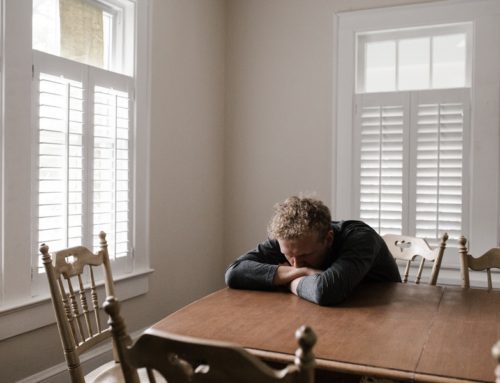Although we may think of post-traumatic stress disorder (PTSD) as the result of violence experienced on the battlefield, many other situations close to home can lead to PTSD. Vicarious post-traumatic stress disorder affects those who witness horrific situations but are themselves unharmed physically[1]. Although many such situations happen rapidly, such as an automobile accident, others are months or even years in the making.
Sometimes called secondary trauma, vicarious trauma is often found in those who take care of other people. Human services workers, nurses, physicians, counselors, and the list goes on and on. Healthcare and therapists are common victims of vicarious trauma.[2] Police officers and criminal investigators are also prone to secondary and vicarious trauma. Helping people who have been grievously wounded in the bodies, minds or spirits can lead to a kind of secondary wounding. It results from highly empathic people coming into contact with terrible situations. Ironically, people who make their work helping others in the worst of times tend to be above average in empathy, making them prime sufferers of secondary trauma.
Symptoms of Vicarious Trauma
There’s no cookie-cutter response to vicarious or secondary trauma. The most common symptoms include:
- Emotional symptoms include feelings of deep sadness, even grief. Anxiety is common, as well as increased irritability. It’s typical for a person to not know the source of their emotional pain. People may feel increasingly helpless, pessimistic and hopeless.
- Cognitive symptoms including difficulty concentrating, increased distractibility, impaired memory and trouble making decisions in daily life. People may have trouble thinking about anything except upsetting events.
- Physical symptoms can be across the spectrum. Headaches, trouble sleeping, stomach ulcers, stomach cramps, irritable bowel syndrome, muscle tension and an uptick in aches and pains. Chronic secondary trauma can induce problems with the immune system, leading to more bad colds.
- Behavioral symptoms include changes in eating and sleeping habits, anhedonia, and self-isolation. People often turn to increased alcohol and/or substance use and abuse.Ironically, people may increase the time they spend at work in an attempt to “work out” their stress. That tactic rarely works.
Treatment for Vicarious Trauma
Caregivers are encouraged to proceed with as much empathy as possible w, but vicarious and secondary trauma.
Psychotherapy with a qualified professional mental healthcare provider can be the most rapid and thorough means of getting back to stability. Once a person has regained a measure of their psychological balance, there are many self-care techniques a psychotherapist can teach that a person can carry out at home.
Damaris Aragon, ARNP, BC provides a full spectrum of mental health care to people in Spokane, Washington and the surrounding areas. She focuses on providing compassionate personalized care that adheres to current evidence-based standards. Reach out to Damaris through her contact page or calling 509-342-6592.






